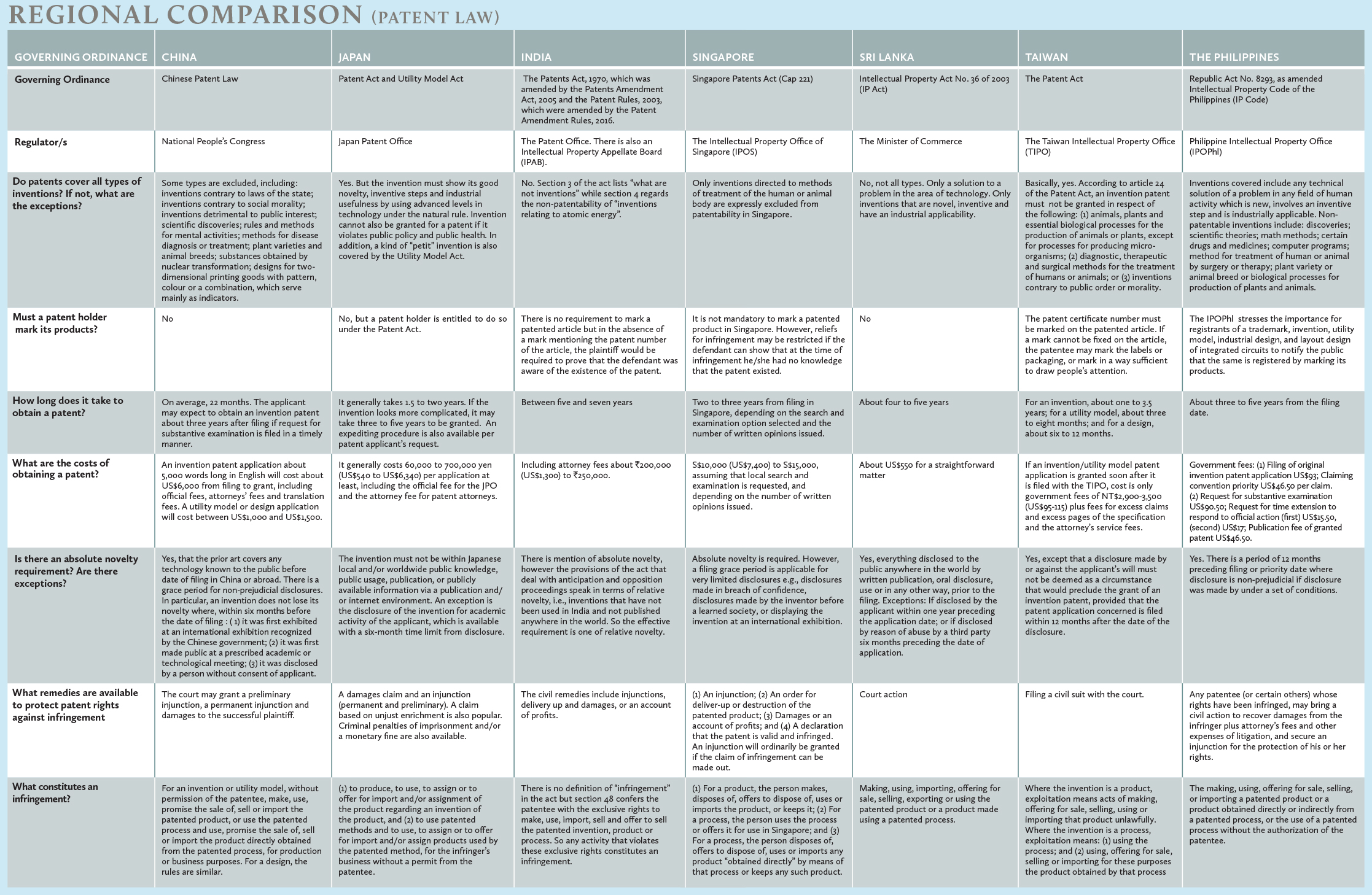Patent laws in the region vary in their effectiveness. Regulations across jurisdictions to crack down on infringers are in a constant state of renewal and revision in order to stay ahead of those who steal intellectual property. Keeping the trolls at bay depends on staying abreast of regional developments in patent law

Navigation
China | India | Japan | Singapore | Sri Lanka | Taiwan | The Philippines
INDIA
In the year 2016, two major developments were set in motion by the Indian government- the National IPR Policy, approved on the 12th of May and the Patents (Amendment) Rules, 2016, which came into effect on the 16th of May. While the former clarified India’s policy position on a number of substantive provisions relating to patent law, the latter sought to improve the procedural framework with respect to patent examination, grant and opposition. The notable aspects of each of these are analysed below.

Managing partner
Anand and Anand
Email: pravin@anandandanand.com
The national IPR policy 2016
The mission statement of this policy seems to envision a balance between fostering innovation and protecting public interest considerations such as access to healthcare, food security and environmental protection.
The policy also puts down seven objectives including: promoting IPR awareness; stimulating IPR generation; ensuring a strong legislative framework that balances the interests of the right owners with the larger public interest; modernizing and strengthening the IPR administration; encouraging the commercialization of IPR; and strengthening the adjudication and enforcement mechanisms against infringement and developing human resources, institutions and capacities within the IP field.
However, the policy has drawn flak for refusing to change the Indian position on certain issues of global interest such as compulsory licensing, and section 3(d) of the Patents Act, which bars the patentability of new forms of a known substance unless there is a significant difference in the efficacy.

Managing Associate
Anand and Anand
Email: nishchal@anandandanand.com
For instance, the policy seeks to “continue to utilise the legislative space and flexibilities available in international treaties and the TRIPS [Trade-Related Aspects of Intellectual Property Rights] Agreement”, which has been widely construed to be a reference to compulsory licensing. The global response to India’s stance on this issue has not been welcoming. In fact, in April 2017, the office of the US Trade Representative placed India on its Intellectual Property Priority Watchlist “for lack of sufficient measurable improvements to its IP framework on longstanding challenges and new issues that have negatively affected US right holders over the past year, particularly with respect to patents, copyrights, trade secrets and enforcement.”
While it was reported that India had tried to assuage concerns on its compulsory licensing issues by giving private assurances to the US in early 2016, the Ministry of Commerce and Industry, through a press release on 22 March 2016, officially reiterated its right to grant such licences in accordance with the Doha Declaration and the TRIPS Agreement.
Notwithstanding this, the policy has also brought in some improvements to the patent regime. One such step is the facilitation of IPR generation by start-ups. This has been done through the creation of a Start-ups Intellectual Property Protection Scheme (SIPP) which was launched in January 2016.
In conjunction with this, the Patent (Amendment) Rules, 2016 also has provisions relating to the process of patent approvals for start-ups.
Another significant area of improvement is the objective of modernizing the administrative set-up surrounding patents. A notable advancement with respect to this was brought out in February 2015 through the launch of the Indian Patent Advanced Search System (InPASS) by the Indian Patent Office.
This new system allows for advanced patent searches to be performed on the basis of fields such as title, claims, abstract, application number, patent number, description, field of invention, inventor name, inventor address,
applicant name, filing office, and PCT (Patent Co-operation Treaty) application number.
You must be a
subscribersubscribersubscribersubscriber
to read this content, please
subscribesubscribesubscribesubscribe
today.
For group subscribers, please click here to access.
Interested in group subscription? Please contact us.
你需要登录去解锁本文内容。欢迎注册账号。如果想阅读月刊所有文章,欢迎成为我们的订阅会员成为我们的订阅会员。
B-41, Nizamuddin East
New Delhi 110013, India
Contact details:
Tel: +91 120 405 9300
Email: email@anandandanand.com
www.anandandanand.com



























